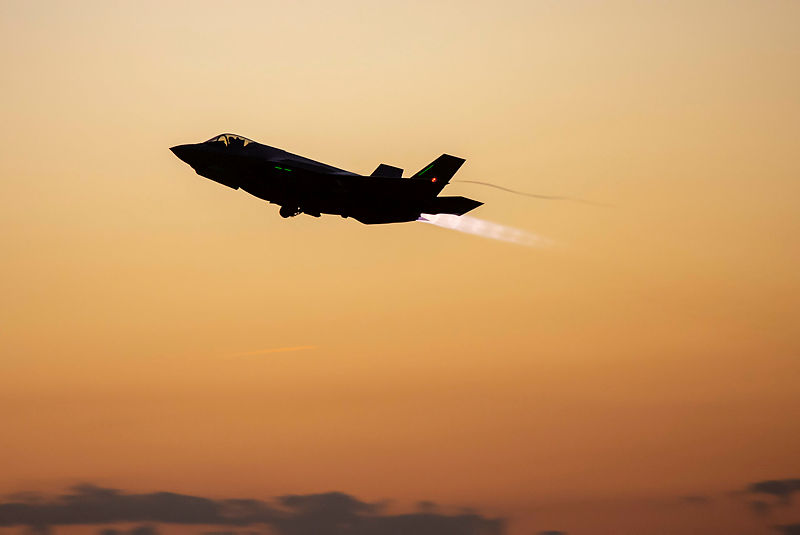
The first question that people ask me about the defence budget is, ‘Will it reach 2% by 2020–21 as the government promised?’ The short answer is yes. According to the
budget papers, the consolidated defence budget (that is, the budget for the Department of Defence and the Australian Signals Directorate) will reach 2% of GDP next financial year. That will require an increase of around $3 billion on 2019–20’s $38.7 billion, but that’s not particularly extraordinary or unachievable. And there’s no reason to doubt that the government will meet this 2016 white paper commitment—in the four budgets since the white paper, the
government has delivered the promised funding.
The longer answer, as explained in
ASPI’s annual budget brief, The cost of defence, released today, is that defence planning has already passed it. The government did not say that the defence budget would be mechanically set at 2%
ad infinitum. In fact, according to the budget papers, defence funding continues to grow beyond 2% over the forward estimates, reaching roughly 2.2% by 2022–23. And after that, it stays there for the rest of the
white paper’s funding model, which goes out to 2025–26 (
page 180).
That means that the government’s planned funding line for defence and a hypothetical 2% of GDP funding line diverge after 2020–21. While a difference of 0.2% of GDP might not sound like much, in dollar terms that gap quickly reaches $5 billion per year based on ASPI’s modelling of GDP using the budget papers’ growth predictions. The difference totals $22.4 billion over the second half of the white paper decade. That difference will be even bigger if the economy doesn’t grow at the 2.75% rate (and 3% from 2021–22)
forecast in the budget papers. Since GDP growth has hovered stubbornly around 2.6% on average since the global financial crisis, and recent indications suggest a slowing economy, 3% is ambitious.
Defence’s
investment planning extends well into the future so we can be pretty sure that the department is planning on spending all of the money that the government said it would give it. That’s essentially what a fully costed white paper means. In summary, the plan already assumes the budget is going beyond 2%. Therefore, if this or a future government decides that something closer to 2% is what it’s willing to pay for defence, it will inevitably have an impact on capability.
The next question is, ‘Where is that funding going?’ The short answer is, the capital budget. Traditionally, it’s the smallest of the three main components of the budget (alongside personnel and operating costs). But over the forward estimates, capital investment is forecast to grow to nearly 40% of the total defence budget.
If we take into account the fact that GDP is growing, the defence budget is growing as a percentage of GDP, and capital is growing as a percentage of the defence budget, that compounds into a massive increase. By the end of the forward estimates, the capital budget alone reaches $19 billion. That’s a 155% increase in real terms since the Coalition came to power in 2013–14. By the end of the white paper decade it’s $23 billion.
So does that mean the big shopping list in the white paper that includes the naval shipbuilding and armoured vehicle megaprojects is affordable? We suggested in
last year’s The cost of Defence that naval shipbuilding alone will cost $3.5–4 billion per year. You’d think that a capital budget of $19–23 billion would cover it.
There are reasons to be cautious. First, operating costs are also rising sharply. For example, by the end of the transition from the F-111/Classic Hornet fleet to the F-35/Super Hornet/Growler fleet in 2022–23, the annual air combat sustainment cost will have gone from $260 million to around $1.1 billion based on ASPI’s projections.
And it’s not just platforms themselves. As Defence becomes increasingly ‘network-centric’, the cost of the ICT backbone that holds it together is also going up steeply, from around $450 million in 2008–09 to $1.6 billion in 2022–23. It’s not surprising, then, that since the white paper, Defence has underachieved against the predicted capital spend but overspent on sustainment by a similar amount (roughly $4 billion).
Another cause for concern is that some costs, such as for personnel, are not rising much, but perhaps they should be. Personnel spending is traditionally the biggest of the three, but it will fall below 30% of the total. The white paper allocated the ADF an additional 4,400 personnel, an increase of around 8% (
page 146). It’s hard to see how Defence can acquire all that capital equipment and develop new capabilities with only that small increase. And it’s already having trouble meeting the relatively modest white paper targets—it’s only managed to grow the ADF by around 600 since the white paper, about 1,100 short.
There’s no ‘ideal’ balance between personnel, operating and capital spending that fits all organisations. But it’s unlikely there are many defence forces that can sustain capital spending at 40% of their budgets. NATO is aiming to get its members above 20%, and only a very few members are
over 30%. Interestingly, Defence’s capital budget has stuck fairly stubbornly at around 30% for five years now.
So it may be that as the defence budget grows past 2%, a ‘natural equilibrium’ between personnel, operating and capital may assert itself and Defence won’t reach 40% in capital spending. That’s probably good if it wants to be able to crew and operate its equipment. But it could also mean that it won’t be able to get everything on that shopping list.
 Print This Post
Print This Post